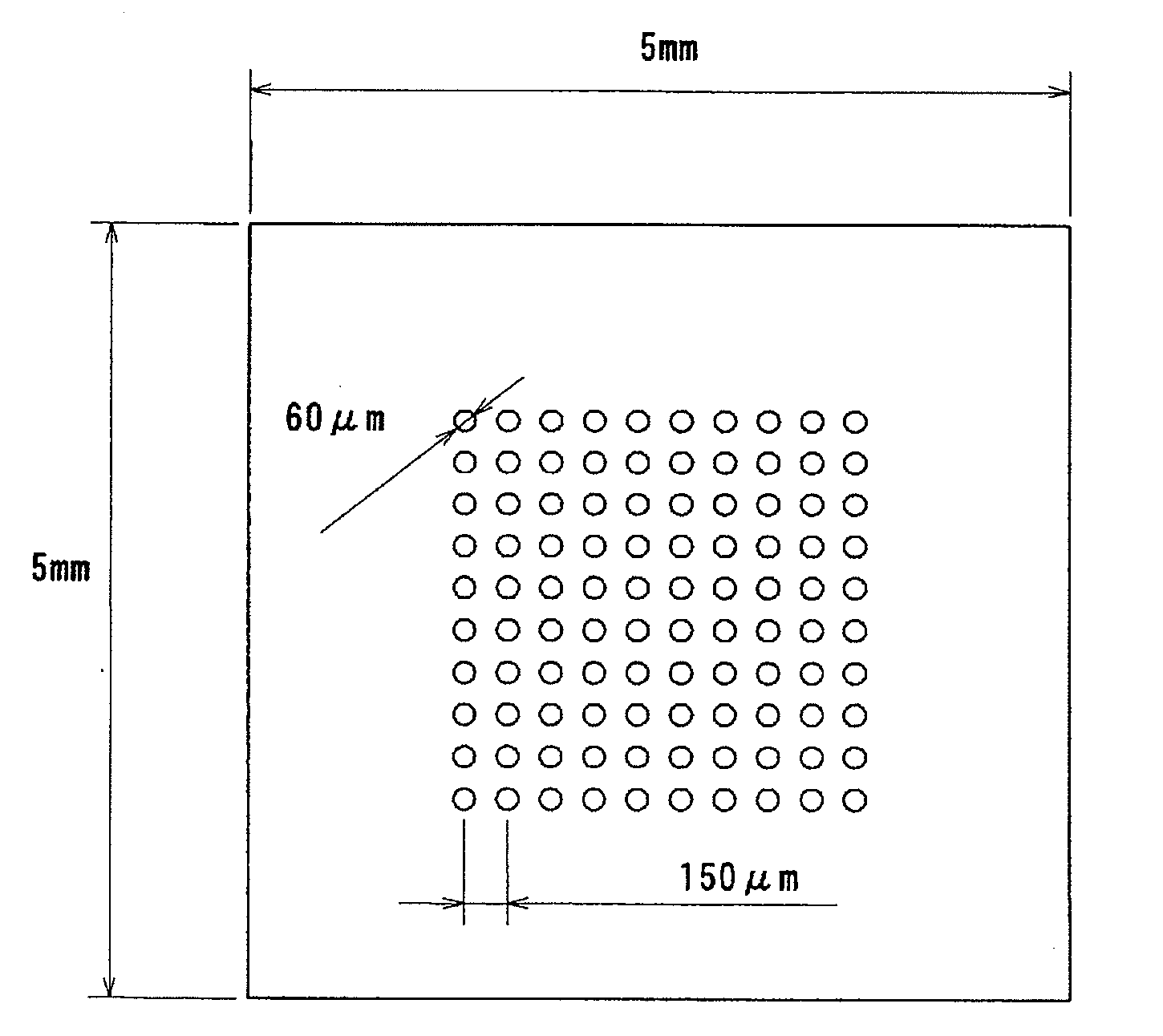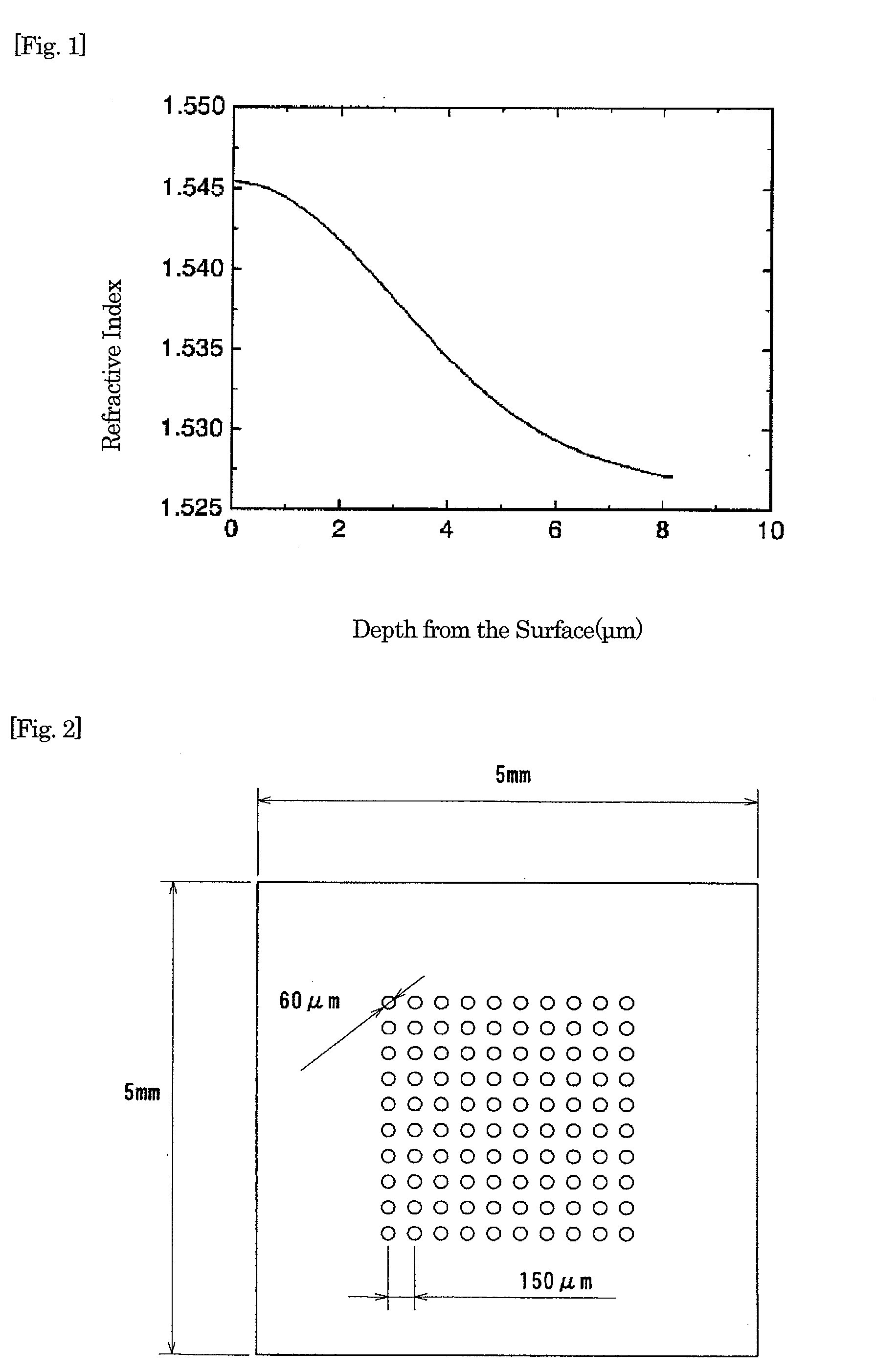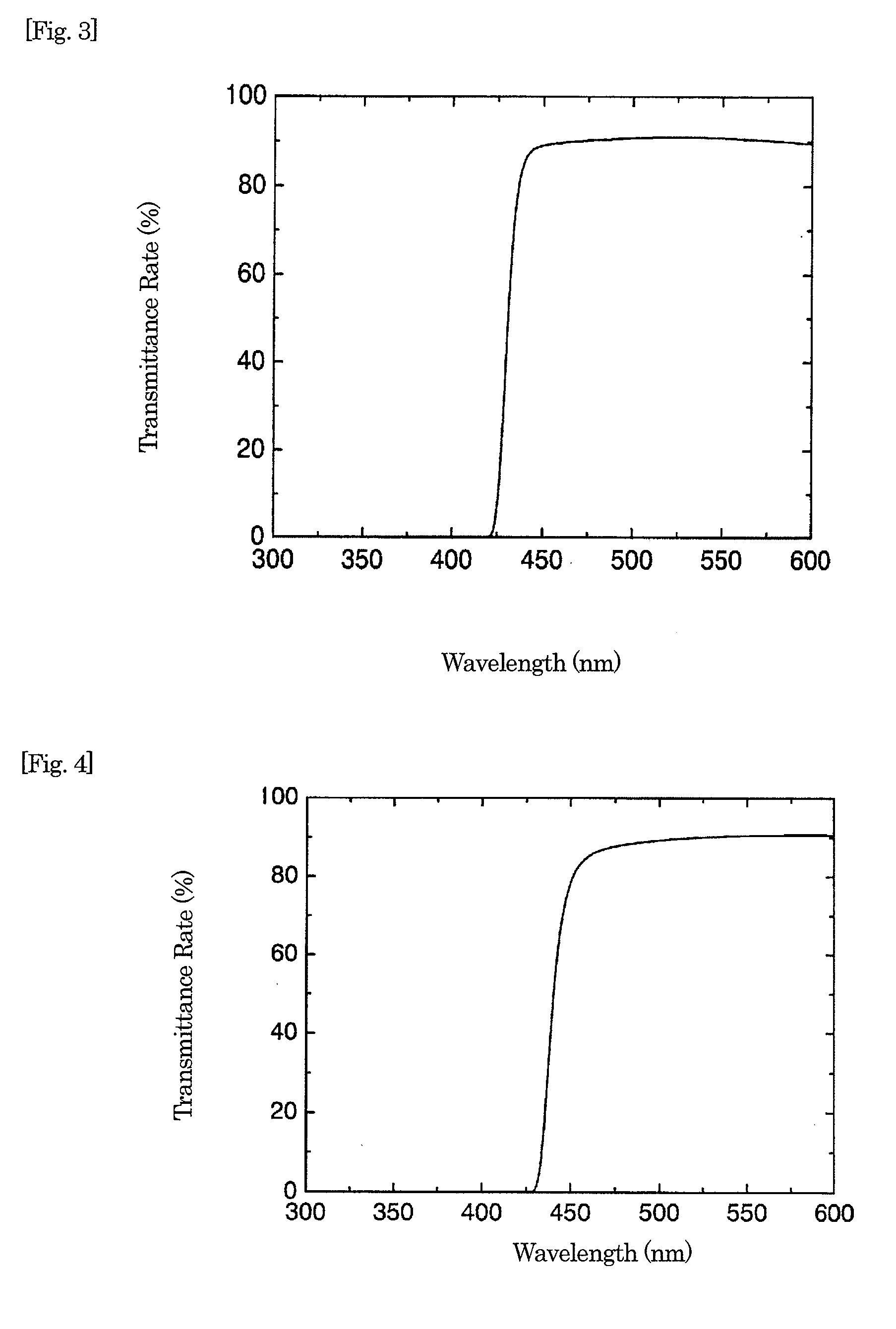Method for production of distributed refractive index-type optical element having ultraviolet ray-absorbing ability
a technology of refractive index and optical element, which is applied in the direction of instruments, lighting and heating apparatus, lenses, etc., can solve the problems of complex manufacturing process, difficult optical design of damage to liquid crystal and other displays, so as to simplify the process and reduce the cost
- Summary
- Abstract
- Description
- Claims
- Application Information
AI Technical Summary
Benefits of technology
Problems solved by technology
Method used
Image
Examples
example 1
Production of Distributed Refractive Index-Type Micro Lens
[0063]The glass comprising SiO2: 68 weight %, CaO: 12 weight %, Na2O: 14 weight %, K2O: 1 weight %, Al2O3: 1.5 weight %, MgO: 2.5 weight % and a cerium ion: 1 weight % was processed into a glass substrate of 10 mm in length, 10 mm in width and 1 mm in thickness, and the surface of the substrate was washed.
[0064]A paste comprising AgNO3: 25 weight %, NaNO3: 40 weight %, acrylic resin: 15 weight %, cellulose resin: 15 weight % and terpineol: 5 weight % (composed of 20 parts by weight of an organic solvent, 120 parts by weight of resin components and 160 parts by weight of an additive per 100 parts by weight of a silver compound) is applied in circles (500 μm in diameter) by dropping it trough an injector onto one side of the glass substrate. The thickness of the paste was 1 mm.
[0065]Then, the paste-applied glass substrate was dried at a temperature of 200° C. for one hour and heat-treated in the air at 300° C. for 12 hours.
[006...
example 2
Production of Distributed Refractive Index-Type Micro Lens Array
[0069]The glass comprising SiO2: 57.6 weight %, B2O3: 20 weight %, Al2O3: 3 weight %, Na2O: 10 weight %, K2O: 3 weight %, ZnO: 5 weight %, ZrO2: 0.5 weight %, CuBr: 0.67 weight % and CuI: 0.23 weight % was processed into a glass substrate of 5 mm in length, 5 mm in width and 1 mm in thickness, and the surface of the substrate was washed.
[0070]A paste comprising AgNO3: 25 weight %, NaNO3: 40 weight %, acrylic resin: 15 weight %, cellulose resin: 15 weight % and terpineol: 5 weight % (composed of 20 parts by weight of an organic solvent, 120 parts by weight of resin components and 160 parts by weight of an additive per 100 parts by weight of a silver compound; degree of viscosity at normal temperature: 10 cP) is applied in circles (60 μm in diameter) onto one side of the glass substrate by an inkjet method. The application was done at 10×10 points (100 points in total) with a patterning interval of 150 μm (an interval bet...
example 3
Production of Distributed Refractive Index-Type Micro Lens Array
[0075]The glass comprising SiO2: 57.6 weight %, B2O3: 20 weight %, Al2O3: 3 weight %, Na2O: 10 weight %, K2O: 3 weight %, ZnO: 5 weight %, ZrO2: 0.5 weight %, CuBr: 0.67 weight % and CuI: 0.23 weight % was processed into a glass substrate of 10 mm in length, 10 mm in width and 1 mm in thickness, and the surface of the substrate was washed.
[0076]A paste comprising AgNO3: 25 weight %, NaNO3: 40 weight %, acrylic resin: 15 weight %, cellulose resin: 15 weight % and terpineol: 5 weight % (made up of 20 parts by weight of an organic solvent, 120 parts by weight of resin components and 160 parts by weight of an additive per 100 parts by weight of a silver compound; degree of viscosity at normal temperature: 10cP) is applied in circles (60 μm in diameter) onto one side of the glass substrate by an inkjet method. The application was done at 20×20 points (400 points in total) with a patterning interval of 150 μm (an interval bet...
PUM
| Property | Measurement | Unit |
|---|---|---|
| weight percent | aaaaa | aaaaa |
| weight percent | aaaaa | aaaaa |
| weight percent | aaaaa | aaaaa |
Abstract
Description
Claims
Application Information
 Login to View More
Login to View More - R&D
- Intellectual Property
- Life Sciences
- Materials
- Tech Scout
- Unparalleled Data Quality
- Higher Quality Content
- 60% Fewer Hallucinations
Browse by: Latest US Patents, China's latest patents, Technical Efficacy Thesaurus, Application Domain, Technology Topic, Popular Technical Reports.
© 2025 PatSnap. All rights reserved.Legal|Privacy policy|Modern Slavery Act Transparency Statement|Sitemap|About US| Contact US: help@patsnap.com



